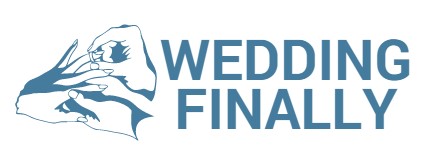In the case of our furry companions, the proper dog collar is a must-have accessory. Dog collars serve multiple purposes, including identification, safety, and style. With a myriad of options on the market, finding the best dog collar for your furry pet may be difficult.
The Versatility of Dog Collars
Dog collars aren’t just a fashion statement; they play a significant role in your dog’s life. Let’s take a look at the different aspects of collars for dogs and how they benefit your pet.

Safety and Identification: One of the primary functions of a dog collar is to act as a source for identification. A tag with the contact information of your pet is normally placed on the collar, helping to locate your pet in case they get lost. The best dog collars have a sturdy D-ring to secure the tag, ensuring it doesn’t fall off during play or walks.
Control and training Dog collars can play an important role in guiding and training your pet. For instance, a standard collar is a great way to tie the leash to give you control on walks as well as outdoor activities. If you have a pet that is strong or very hyper, a collar with the right fit will ensure that your dog is in control and stop your dog from pulling on too much.
Personalization and style. Safety and function are important, but style and individualization also play a role. Dog collars are available in a wide range of colors, materials and designs. This lets you reflect the personality of your pet and also your style. A collar that is personalized with your pet’s name or a unique design can add a special touch.
Dog Collars Types
Understanding the many types of dog collars and their different purposes is important.
Standard Flat Collar: The most popular dog collar is the flat collar. The collars are simple flexible, adjustable, and appropriate for daily wear. They are great for attaching ID tags on your dog and to walk with.
Martingale Collar: Martingale collars are specifically designed for dogs who tend to fall out of traditional collars. They tighten as the dog pulls on the leash, to ensure that it is not able to escape, but without choking. They’re an excellent option for dogs with narrow heads, such as Greyhounds.
Prong Collars (also called pinch Collars) are controversial, but they can be effective in certain circumstances. The prongs of the metal are used to apply pressure to the dog when they pull. This can deter pulling behaviour.
Head Collar The head collars, similar to Halti or the Gentle Leader or Halti can provide the dog with a head collar, making it easier to guide their movements. They are a great option for dogs with strong pulling or a high level of excitement.
Harness: While not technically a collar nor a leash, harnesses are mentioned. They can be more accomodating for dogs suffering from tracheal issues, as they distribute the pressure equally. Harnesses can be a good option for dogs with breathing issues or are small breeds.
The Most Dog Collar
Picking the ideal collar for your dog depends on the size of your pet, their behavior, and requirements. Consider these factors when choosing your collar:
The collar should be secure but not too tight. Two fingers should be able to fit between the collar’s ring and the neck of your dog. Check that the collar is not too loose because your dog could slip out.
Material: Dog collars are available in many different materials, including nylon, leather, and chain. Take into consideration your dog’s comfort and your personal preferences. Leather collars can be elegant and durable, but nylon collars tend to be light and easy to clean.
Safety Features: To ensure your dog’s safety, select collars that have reflective strips. They will be more noticeable at night. There are breakaway collars available that let your dog go when it is caught in an object. This will prevent your dog from choking.
When choosing a collar, think about your dog’s manner of walking. If your dog pulls on the leash, you might want to consider a martingale collar or a no-pull halter. A standard collar is ideal for dogs that are calm and well-behaved.
Style and Personalization: Show your dog’s personality and fashion preferences by selecting a collar that reflects their personality. Personalized collars or those that feature unique designs can give some individuality to the appearance of your pet.
We also have a conclusion.
Dog collars are crucial for dog’s security and training as well as for their style. When selecting the right dog collar for your pet take into consideration factors such as the size, the material, safety features, and your dog’s behavior. Your pet will appear fantastic and stay safe with the appropriate collar.
